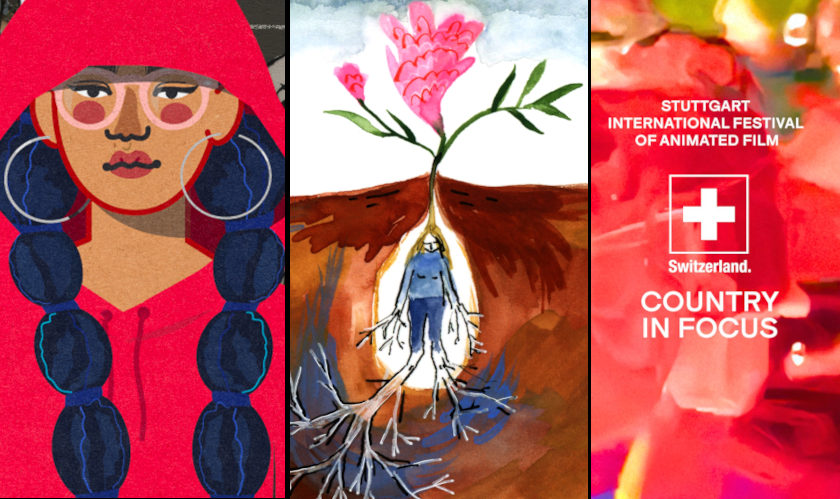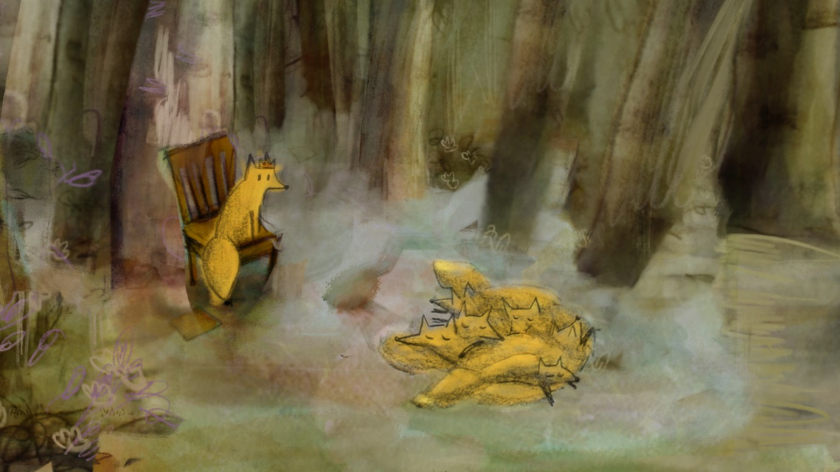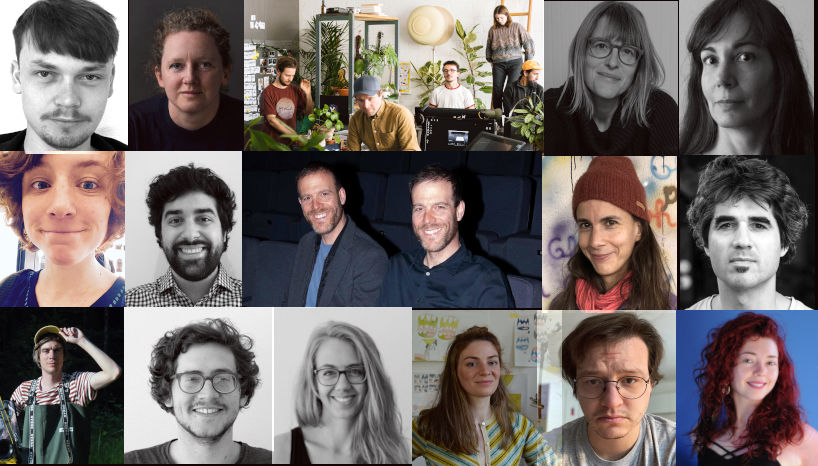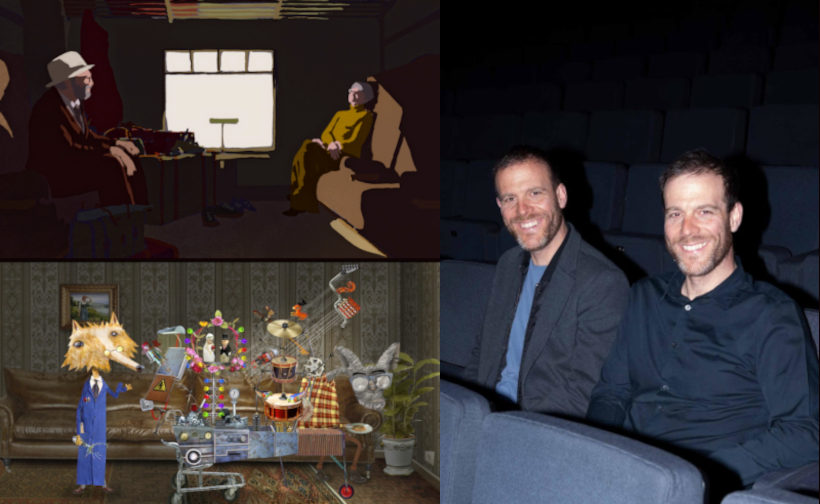Morality, Satire and Cynicism: Interview with Noah Erni (Swiss Animation Portraits 2022)
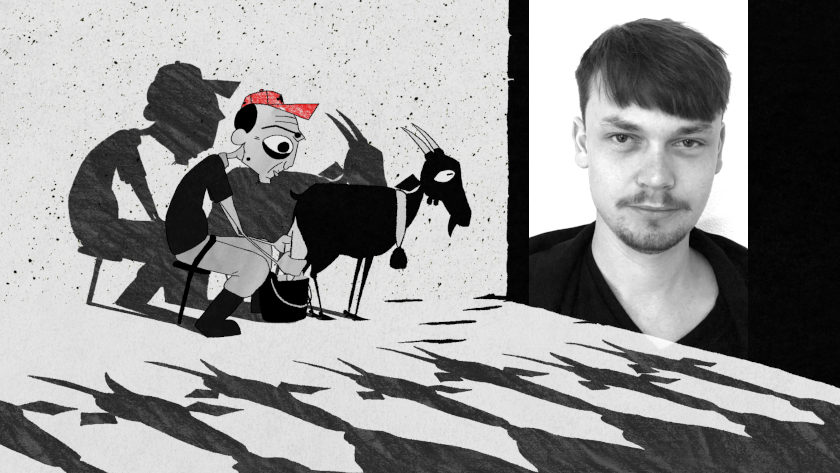
Noah Erni is an emerging Swiss animation director who plays with our perceived opinions. A graduate of HSLU (but also a sociology graduate from the Zurich University of the Arts), he has completed so far 4 films: ‘Oh, Bee...’ (2018), ‘Karnivoren’ (2020), an animation documentary on meat lovers, his HSLU graduation film ‘The Tale of Green Cheese’ (2020), another comedic tale on Swiss folk culture. His latest short film, ‘The Invention of Less’ (2021) competes at the 2022 Annecy Festival. He talks to Zippy Frames.
ZF: Do you have an overarching idea for your films or an incident that kicks off the process?
NE: Yes, I work a lot like this. In ‘Karnivoren’, I struggled with the same issues myself (politics, how we should live), and at the very same time, I did the interviews with people eating meat. In ‘The Invention of Less’, the climate crisis subject really interests me; I do have this feeling that we could do something but at the same time the feeling of helplessness. Those things enter my films.
ZF: ‘Oh, Bee..’ is your first film. Why did you actually choose the flowers and the bees as your theme? And what was your relationship with the music in this film? It is very prominent.
NE: This was a project commissioned by the Swiss Radio and Television (SRF); they asked for films that advocate biodiversity because wild bees are struggling to live in our nature -we have destroyed most of the flower beds, so bees don’t have any natural habitat anymore. And they needed films on that biodiversity subject. We did the film together with Marion Täschler as a school project at the HSLU in collaboration with Musicians of the Zurich University of the Arts back in 2018.
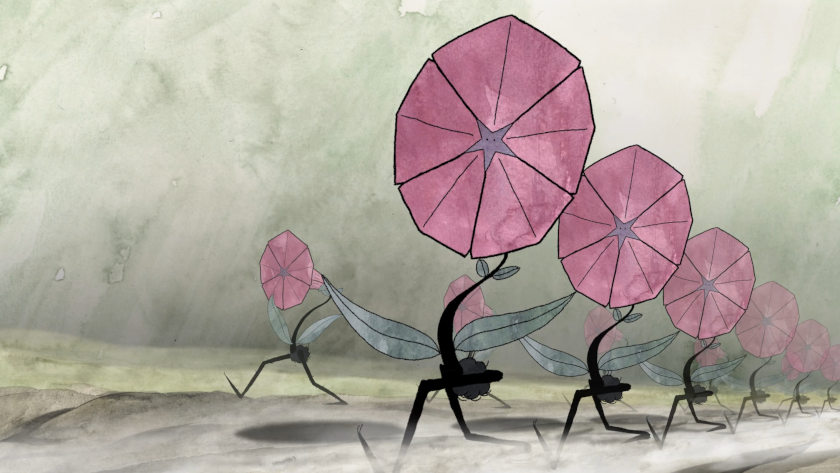
Regarding music, we worked together with students in the music composition department -they did the whole film music, even from the beginning, as the story developed. When we had the first storyboard, we met the musicians and they did a rough set of music. Discussions followed, and we changed things for the better. So, we ended up doing that kind of musical.
ZF: But was it easy for you to make?
NE: It was a learning curve; for instance, talking about sound with other people and professional musicians is a very subjective issue; you don’t know if what you hear is what other people hear. Also, as it was the first project and I worked together with Marion, it was quite difficult to figure out the whole process; we sometimes work quite differently. So, we had to find at first how to get along with each other.
ZF: Did you actually want to become an animation artist when you were at school? How did you enter this animation world?
NE: As a kid, I was interested in animation and did drawings as a teenager. But then when it came to deciding what I wanted to study, I grew up in Lucerne and just wanted to leave the city. So, I studied sociology for four years in Zurich. I was a little bit frustrated afterward, though; if you study sociology, you always think and research things, but it’s really hard to communicate them to others, and it is always really scientific. But in the movies, you can talk about those subjects that you have studied in a more subjective and personal way; it’s easier that way because people really think more when they experience their own emotions. So, I wanted to learn this craft, and I went back to Lucerne and studied animation at HSLU.
ZF: Why animation and not live-action?
NE: I really appreciate all these possibilities you have in animation. You can push things to the limit and draw everyone without leaving your desk and create all these crazy worlds. I really loved those satirical and cynical cartoons, like South Park, the Simpsons and Co.. And, during my HSLU studies, the world of independent animation was opened to me in ways that I hadn’t known before. So, ‘The Tale of the Green Cheese’ became my graduation project.
ZF: What is the curriculum like in HSLU?
NE: In the first semester, you learn different techniques in 2D animation or 3D and stop motion. Afterward, you can concentrate on what you want to specialize in. During the second year, you have co-production projects, where you can contribute teasers for Cartoon Network or like we did for SRF (up to one or two-minute films); you have the one semester to work on just this assignment -the goal is to learn how to do a project from the beginning to the end. In your last year, you work mainly on your graduation project. In between, there are interdisciplinary courses to choose from.
ZF: How easy was it for you to actually interview your subjects for your ‘Karnivoren’ film? Was it fun?
NE: The main idea was of people on a sinking ship that realize the problem but decide to ignore it. We are on our planet, we know that there is a problem here, know what we could do and still we continue to do the same thing we actually know will destroy us. Therefore I had the idea for this image of animals waiting in a slaughterhouse for their slaughter while explaining why they still eat meat.
Then I made the interviews (half an hour of material from each participant). The people I interviewed I knew well. I knew they had some really strong opinions about the subject and they all loved meat. What amazed me the most was the fact that if you just let people talk during the interview, they will talk and talk. I didn't really have to ask them that much. But half the people interviewed then are now vegans -it’s funny.
ZF: What about you?
NE: I try to eat mostly vegetarian food, but I also struggle with the same thing. It's a difficult question to ask yourself: what are any good reasons for eating meat, except that it's delicious? But on the other hand, turning your rational thoughts into actions and changing your behavior is not always that easy.
ZF: You have another revenge plot in your ‘The Tale of the Green Cheese’. How did this come about?
NE: A friend of mine was in the Alps and she did her own cheese. So, I went to visit her and I was quite fascinated by all these old horror stories you have in the Swiss mountains and these grim and dark tales, which often deliver some kind of moral with them.
Then she told me one thing I didn’t know: that young calves need to die in order to make the cheese because you need rennet as an ingredient, an enzyme found in the calves' stomach - which you only get by killing them shortly after they got born. This was the real background of the story, the violation of the animals just to get the cheese. My satirical description is not that far away from the real way how cheese is made.
ZF: Is the expressionistic style you use in the film, with its shadows and angular design, part of the Swiss stories you’ve heard?
NE: In Switzerland there is a long tradition of scissor cutting [Scherenschnitte], showing rural motives, like the mountains, farmers with their cows, and people making cheese. I wanted the movie to resemble this black and white world because here in Switzerland cheese is more than just food, it's a national symbol. The whole cheese thing is part of our national identity culture; the scissors cuts are part of this image used by the advertisements as well. I tried to take this cultural thing and place it in a really dark context to play around with this symbol.
ZF: Did it take a lot of time to actually make the scripts and storyboards of the film?
NE: It was part of a course. I had the rough idea before and then I worked it out in two weeks in the school course, together with teachers Paul Bush and Ted Sieger. It was a really tough period of two weeks to develop a working story; afterward, we had a little bit more than one month of storyboarding the piece.
ZF: Do you feel more comfortable writing the script, storyboarding, or animating?
NE: It's more fun to write the script and storyboarding than to animate. But it's also the more intense aspect of work, with its thinking aspect of things. Animation is more comfortable in that way, but, of course, it's hard work to stay concentrated and focused. We were restricted therefore by the school to a maximum of a 3-minute short film, in order to not overwork ourselves [the film turned out to be a 4-minute film]. So‚ ‘The Tale of the Green Cheese’ became a really fast film.
ZF: Did you have any script ideas that didn’t make it to the final film?
NE: I really struggled with the end of the movie because I wasn't sure about directing a big revenge story or not. Should the farmer be killed or should they make peace with him? So, I changed this a lot. The role of the son was modified; I had a lot of background ideas about him. Where he came from, what happened to him, and how he managed to escape from the farmer. But, in the end, it didn’t fit nicely with all those fast cuts that were necessary; and these comedic jumps worked better in the film.
ZF: Do you actually feel the way in your films to subvert some established opinions that people have in your environment and your own country, and you think that they are wrong about it?
NE: We have a difficult relationship with the idea of what is Switzerland. I don't like this national thinking that you close yourself. If you look at Switzerland, the country seems to have closed its borders and it's really going its own way; the only international way it thinks about is money. For an artist in Switzerland, of course, it’s probably really easy compared to other countries; even though you may not earn much money, it's quite easy to compensate for it with a regular job. And there’s a lot of funding here and support for artistic projects.
In 2020, we founded Studio uuuh! with Marion Täschler, and we do commission work as well. After graduating we thought It looks more professional when there are two people together and of course, you can support each other; in the beginning, it was quite difficult to figure out how to handle advertising projects, since we both had a background in artistic films; but we have managed to live off our work, and prepare our own personal projects.
ZF: The climate change is the subject matter of ‘The Invention of Less’. But was the inspiring incident in that case?
NE: We are always looking for the solution for everything, but sometimes you need to think in a different direction and go for less. The polar bear was the most logical character to represent climate change. Films for Future Festival which is located in Zurich had a competition for 3-minute films to create for the festival, and the issue was climate change. We did the film quite fast, around 2 months, to get it before their deadline. So, I wrote the script in a week, we recorded the voices, one week of storyboarding, and we had one month to animate. So, it was quite intuitive. It was really a great surprise when the film was selected for its Annecy competition - we just did it for this Zurich festival. But making it was a really nice experience.
ZF: What’s your own Annecy experience?
NE: I’ve been twice there; the first time, I was more ambitious in watching films, and I was at the cinema for three or four screenings per day. The second time, I watched fewer films and I hung out with people more. This time, I’m going for the whole week, and I’m really looking forward to it.
ZF: What comes next in your plans?
NE: At the moment, we are working on a project with Marion Täschler, we want to do a documentary about food poisoning at the international vegetarian congress in the year 1999 in Widnau, a small village in the east of Switzerland. It’s a film about us making this documentary, but then it turns out that we are looking for something bigger and we lose ourselves in conspiracy theories. It's kind of a true-crime format in comedy, with live interviews and fictional stuff together.
ZF: Your films are satirical, mocking established opinions and sometimes offering absurd narrative elements.
NE: I tend to be sometimes quite cynical, and it comes in my films. I don’t think films should be too moral. But I still have quite a clear agenda in, for instance, ‘The Invention of Less’, and it’s more like let’s make some fun as well. Even though I didn’t label it as a children's film, I think it’s quite suitable. In a children’s film, you can raise these quite hard topics that perhaps in real life are not that funny, but you can present them in a funny way. At the same time, you can criticize a lot of people without them being offended.
ZF: You chose 2D digital animation as your medium. Is this your own niche?
NE: I draw things mostly digitally. Puppet animation is on my to-do list as well. But last year we started to experiment with pixelation. I want to get my hands more on this; to reach a point where I can experiment with a mix of live-action or college stuff.
ZF: Thanks a lot for your interview!
NE: Thank you too.

Swiss Animation Portraits 2022 series is conducted in partnership with Swiss Films.
Contributed by: Vassilis Kroustallis




